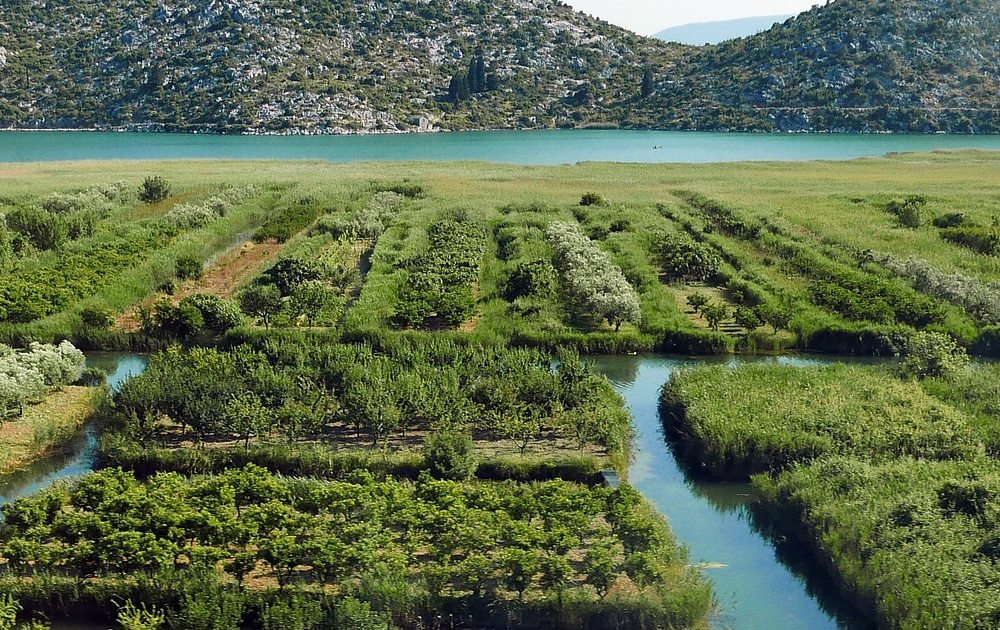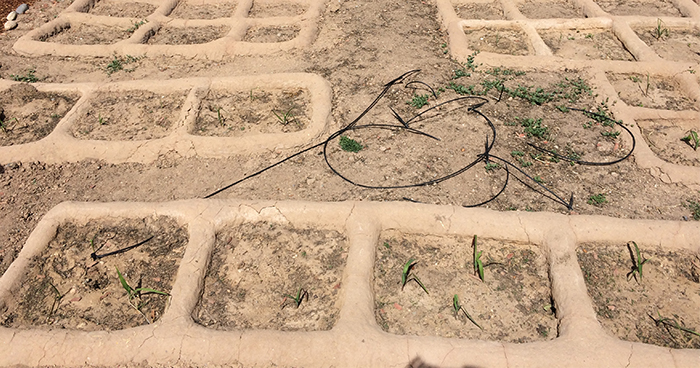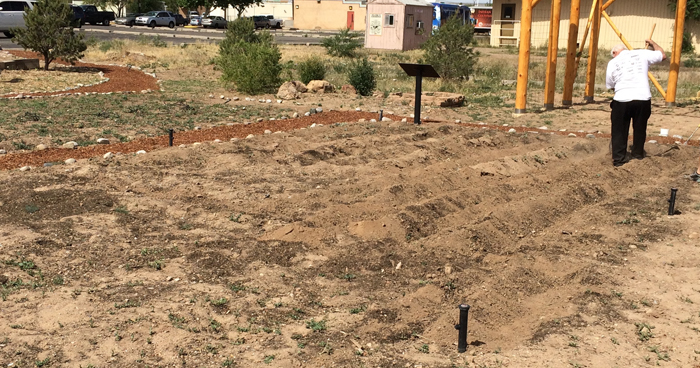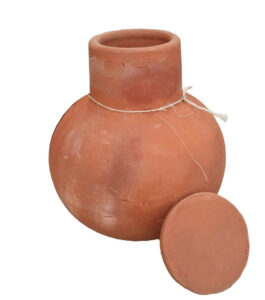Article of the Month
Article of the Month – April
How To Water Your Garden The Ancient Way

Want to know the best way to water your gardens in the heat of summer?
The heat of summer brings with it thoughts of watering your garden and keeping your plants hydrated. Waiting for the rains to come may or may not be a thing in your neck of the woods. If you want the best irrigation system available, looking at the ancient ways may be a good idea. Or perhaps combining them with modern methods will bring you the best of both worlds.
There are Four Methods of Irrigation:
- Surface
- Sprinkler
- Drip/Trickle
- Subsurface
Let’s take a look at the ancient ways:
The History of Irrigation
Watering systems were developed because “necessity is the mother of invention.” Humans have spent most of their history hunting and gathering food. It has only been within the last 9,000 to 10,000 years that humans began to raise crops and domesticate animals.
Egypt and Mesopotamia
Anthropologists believe the first attempts at agriculture and taming the flow of water began in Mesopotamia (modern-day Iraq and Iran) and Egypt. The remains of prehistoric irrigation still exist today. Egyptians used water from the Nile River. They built canals to bring water to their crops. Flooding problems in Mesopotamia were deadly, as the Tigris and the Euphrates carried several times more silt than the Nile. These rivers rose fast and changed their course more often.
Prehistoric Mexico
Canal irrigation and storage dams constructed of blocks mortared together were often used. Crops were irrigated with carefully controlled water by dams.
North America
The Hohokam and Chaco systems are two of the major prehistoric developments with large-area irrigation systems. The Native People of these regions began farming almost 3,000 years ago. They used a series of canals, natural washes, and arroyos. These canals ended at a headgate. Water was either diverted to the fields or an overflow pond or reservoir.

Waffle bed example at the Indian Pueblo Cultural Center, Albuquerque, NM
Waffle Bed Irrigation—Can I Have Syrup With That?
Waffle bed gardening was the original square-foot gardening method.
What is a waffle bed?
Waffle gardens are sunken planting beds that Native Americans of the Southwest used for planting where there is very little rainfall. They originated in Zuni (Pueblo) as a water harvesting technique.
Pueblos developed irrigation systems throughout their villages after permanent water was available. Before that, water was mainly harvested from mesas and indented areas, and a little bit of channeling water was channeled toward farm areas. The Pueblo people still use these methods and ancient irrigation systems today.
These in-ground garden beds were used by the Zuni Tribe more than 1,000 years ago and are still used today. Families grew plants together for consumption and sharing.
The Indian Pueblo Cultural Center in Albuquerque has an example of a waffle bed and flood irrigation in their Resilience garden.
How do I use waffle bed irrigation?
Ground-level berms made of clay, straw, and sand make an adobe mix that dries as hard as cement.
This irrigation technique works just like a waffle. Plants are placed where the syrup goes. When it rains, water collects in the depressions and holds water close to the plant’s roots.
This method did not use mulching techniques.
What crops work best in waffle beds?
The Zuni grow tobacco, corn, beans, squash, and chile with this method.

Flood and furrow bed being dug at the Indian Pueblo Cultural Center, Albuquerque, NM
Flood and Furrow Irrigation—Don’t Stand In The Flood Zone!
Flood irrigation is an ancient method, and probably the first form of crop irrigation. This method is still popular today.
What is Flood Irrigation?
Water is pumped or brought to a field and flows along the ground among the crops. It’s easy and cheap. It conserves water and minimizes your irrigation needs by making the most of the water you receive.
What is Furrow Irrigation?
Furrows help flood irrigation become more efficient by bringing the water to the roots of the plant without drowning the root system.
Furrows are dug between crop rows. The farmer flows water down these furrows, and the water seeps into the ground. Flow to each furrow is usually controlled.
Tip: In permaculture, these are known as swales, or berm and basin method. This method doesn’t upset the natural ecosystem quite as much as the flood or furrow methods.
How to use flood irrigation?
About 39 percent of all freshwater used in the U.S. goes to irrigate crops. This water evaporates and transpires (plant or leaf gives off water vapor) in the fields, so it cannot be reused.
With flood irrigation, it is important to consider the soil type, slope, length of run, and quantity of water available for it to be efficient.
Your first goal with any flood irrigation technique is to increase the soil’s storage capacity. Gravity does the work by pulling the water into the soil near plant roots long after the rains.
What crops work best in flood and furrow irrigation?
Plants with spread-out root systems work best for flood irrigation.
- Fruit and Nut Trees
- Maize
- Sunflowers
- Sugar Cane
- Soybeans
- Broadcast crops – wheat
Plants that will work better with furrows or swales and would be damaged by flood waters.
- Tomatoes
- Root crops, like potatoes
- Beans
- Most vegetables

Ollas—It’s Like a Little Clay Pot From Heaven
Olla, pronounced (Oh-yah), are low-fired, unglazed clay vessels that are an ancient technique for watering plants at the root zone.
The use of Olla Irrigation
Ollas were first used in China and North Africa more than 4,000 years ago. This watering method saves the gardener time, energy, and water. Olla users say that their plants are stress-free, lush, and productive.
Plants watered with this method have water as needed. It is relatively inexpensive, maximizes your garden’s productivity, and minimizes overwatering runoff and water loss.
How Ollas work
Bury the clay pot with the opening above the soil surface. You fill the container with water. The porous walls of the olla allow the water to be wicked into the soil as needed. The pores are microscopic, so the water doesn’t flow out freely.
The soil moisture tension and plant roots create the wicking effect. If the soil is dry, the water inside the olla releases faster since the roots “pull” it out. After a rainfall, the water in an olla will stay until the surrounding soil dries out again.
The Olla makes for an efficient system that promotes dense root growth. This watering method helps the plants efficiently take up nutrients and water.
Which crops work best with Ollas?
Ollas are a wonderful way to water crops like squash, melons, tomatoes, and chiles. You can also water shallow-rooted crops like herbs and lettuce. Keep in mind where the roots will be and the shape of the ollas. For instance, a large round olla with a thin neck will seep most of its water below shallow root crops.
It is not an efficient technique for large fields.
Use an Olla with perennial plants, young trees, vines, and bushes. Keep in mind that as these woody plants grow, they might break the olla.
Tips for Using an Olla
If you are sold on the idea of using an olla or several, here are some things to help you:
- Bury the olla and leave 1 to 2 inches above the surface to prevent dirt and mulch from getting inside. Make sure soil is packed around the olla. Water will not disperse, and roots will not grow in these air pockets.
- Place ollas every 2 to 3 feet in your garden for maximum impact. Larger ollas (2-gallon capacity) can be placed up to 4 feet apart.
- Check the water level frequently and refill as needed. The frequency will depend on the soil type, planting density, and weather. It may need filling every seven days or more frequently.
- Place a plate or cover over the olla opening. A water overflow dish works great! The dish minimizes evaporation and prevents mosquito breeding.
- Do not use ollas in clay soils. The high clay content cannot disburse the water very well.
- If you live in an area with hard freezes, dig up your ollas each winter to prevent them from cracking.
- Small ollas are perfect for container gardens.
- There are several different types of ollas. One is sure to work for your needs.

There are many methods to water your garden, some modern and some ancient. What works best for watering your particular garden is the method that is easiest and cheapest for you…the gardener! Just don’t forget to look at the ancient ways that have been used for centuries to find a possible solution to your watering needs.
Let us know how your gardening adventures are going!
Happy Growing!